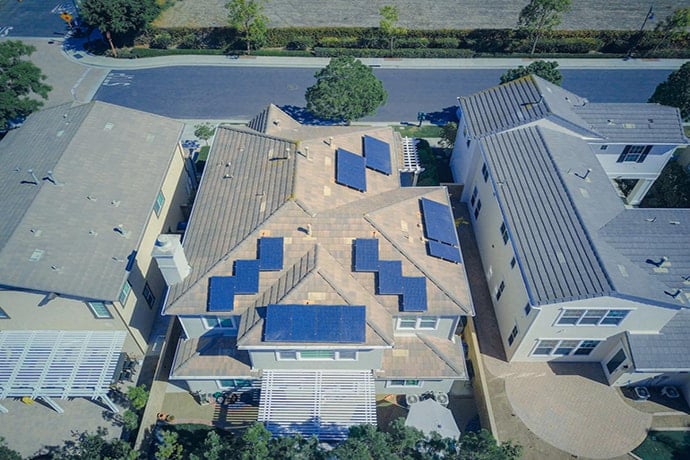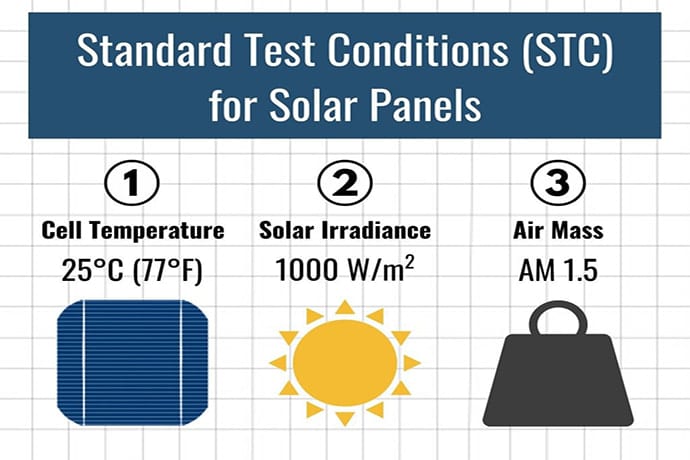If you are looking to install a solar panel system in your home or business, it is essential to understand how to calculate solar panel output and the factors that affect it.
While the power rating (e.g. 200W or 400W) is an indication of the maximum amount of electricity the PV panel can produce per hour, many factors can affect the amount of power output you get. There are too many variables involved in how much power a solar panel will produce per hour to accurately predict how many watts a PV panel will produce. Even panels from the same solar panel manufacturer with the same power rating will produce slightly different amounts of power on the same roof.
You need to keep a variety of factors in mind when calculating solar panel output, including geographic location, home energy use, peak solar hours, etc.
Factors to consider when calculating actual solar output
The benefits of solar energy are many, but building your solar power system requires advanced planning to ensure that your home’s unique electricity needs are met. You need to understand the difference between the wattage rating of your solar panels and their actual power output.
For example, Sungold’s 400W lightweight folding solar panels are rated at 400W, but you’re more likely to generate an average of 340W per hour over a day. With Sungold’s rigid, portable, and flexible PV panel options today, you’ll get about 85% of the rated power in actual output.
Keep in mind that this is a daily average. Some hours, your panel may produce close to 100% of its rated power – other times, it may produce 85% on the same day.
Here are the key factors that affect the actual output of your solar panel array
Solar Panel Efficiency
The efficiency of a solar panel is how much of the energy it produces is converted into usable electricity. Most solar panels have an efficiency rating between 15% and 20%. Solar panel efficiency measures the percentage of direct sunlight received by the PV panel that is converted into electrical energy. Again, the specifications listed are based on ideal conditions – rarely seen in practice.
Factors that affect the actual efficiency of a solar panel include temperature, the age of the panel, and cleanliness. With that said the efficiency of a brand-new PV panel should not vary too much from its listed rating. The higher the efficiency of your solar panels, the more electricity you will generate from the available sunlight.
High-quality monocrystalline PV panels typically average around 21% efficiency. Sungold’s solar panels, such as the 400W rigid solar panel, the 220W double-sided portable solar panel, and even the 100W flexible solar panel, achieve an efficiency of 23% – the best in the industry.

Orientation and Location
Consider how the location where you want to install your solar panels will affect their output. For example, if you live in a sunny location, your commissions will produce more energy than if you live in a cloudy or foggy location
When calculating how many solar panels you need, also consider the direction they face. Solar panels should always face south to get as much sunlight as possible. If your home or business does not have a south-facing roof, you may need to install solar panel trackers to ensure that the panels are always facing the sun.
Tilt is also important when positioning the panels to receive the most sunlight. The best way to get the most output from your panels is to set the tilt of your panels to an angle equal to the latitude of your location. You can keep your panel at this angle all year long or adjust it a few times a year for maximum optimization.
The goal is to place your panel to receive the maximum amount of sunlight. Of course, as the sun’s angle changes, the ideal tilt angle will vary from day to day. To get the most out of your solar panel array, consider using a solar tracker so that your panels can automatically follow the sun.
Solar Panel Output Calculations
Now it’s time to combine everything you’ve learned to estimate how much power your solar array can produce.
The formula for estimating solar panel output is as follows:
Output = STC rating (power rating in watts under standard test conditions) x peak sunshine hours per day x 0.85 (Sungold’s solar panel actual output is 85%) To calculate your solar panel output, multiply the power rating by the peak sunshine hours and then multiply by 0.85.
Why 0.85? This is to help explain all the factors we discussed above that can reduce the power output of your solar panels.
Here’s an example. Sungold 400W rigid solar panels have a rated power output of 400W. assume you live in a place that receives an average of 5 hours of peak sunlight daily.
If you enter this into the equation, you will get the following results:
Output = 400W rated power x 5 hours of peak sunlight x 0.85 = 1,700W
This means that a solar panel with a capacity of 400w can produce about 1,700 watts of power, depending on its efficiency.
Load Power Calculation
Load wattage is the next important thing you need to keep in mind when purchasing a solar panel system. In short, load wattage involves analyzing your power needs by knowing how many appliances you want to charge and for how long.
Formula:
To calculate the total load wattage of an appliance, you multiply the power used by each device by the number of hours of use per day. This will give you the total kilowatt hours of electricity per day for one appliance.
Example:
For example, if you want your refrigerator to run for 6 hours and it consumes 300 watts per hour, here is how to calculate its load wattage
Load Wattage = 300 × 6 = 1800 Wh.
Similarly, you can calculate the load of all other household appliances. Add them up and you will get the total electricity needed for the day.
What are the standard test conditions for solar panels?
Standard Test Conditions (STC) are used to determine the power output of solar panels. Under normal test conditions, solar panels are tested at 25°C (77°F) when the air quality is 1.5 and the solar panels are exposed to 1,000 watts per square meter (1 kW/m 2 ) of solar irradiance.
Just like the EPA’s mileage estimates for cars allow you to do some comparison shopping, the output of different solar panels under standard test conditions allows you to compare panels before you buy
The 3 standard test conditions for solar panels are
Cell temperature: 25°C (77°F)
Solar irradiance: 1000W/m2 (1kW/m2)
Air mass (AM): 1.5
Solving for power ratings is critical to ensuring that your solar panel array meets your power needs.
Final Thoughts
Other important things to remember when purchasing solar panels and balancing your system include
1. maximum AC power output (operating and start-up watts)
2. Power storage (battery) capacity
3. solar charge/input capacity (this determines how many panels you can connect to your system)
4. compatibility between all balances of solar panels and system components (this is especially important if you are trying a DIY solar build rather than an all-in-one solution)
Sungold has professional plug-and-play solar solutions for virtually any use case – from hiking trips to entire home PV grid-connected systems. Check out Sungold today for your off-grid power and grid-tied power needs.


























